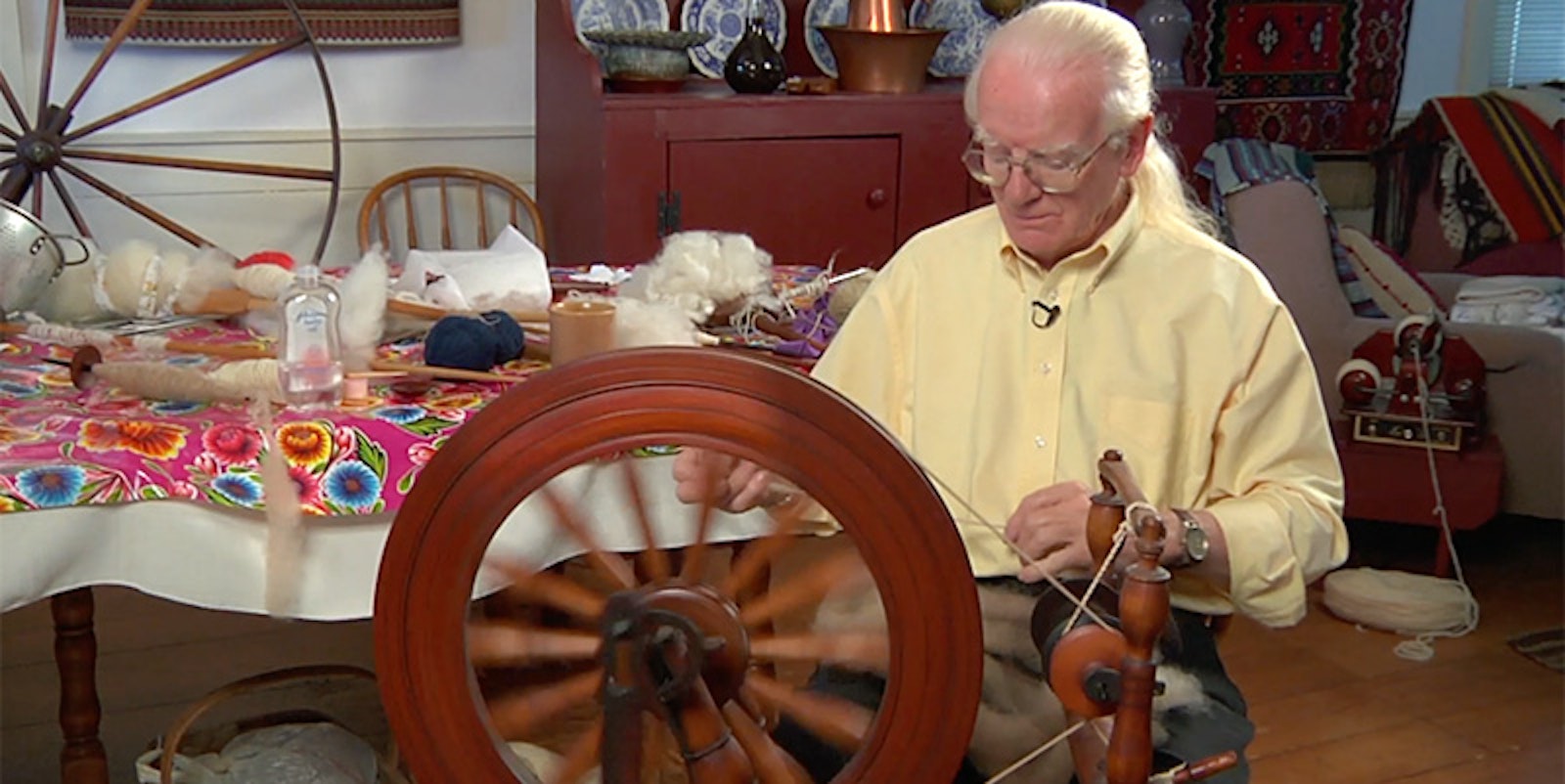When it comes to Norman Kennedy, his singing and storytelling steal the show. In his video From Wool to Waulking, the tales of a lifetime of experience spinning and weaving hold his audience captive. You could say he spins a yarn of a different sort than just the kind formed at the wheel.
But I have a confession: I get engrossed in watching the movements of his hands while he spins at the wheel. His hands make subtle gestures, grasping and releasing the fiber. The twist marries with fiber through the dance of drafting energized by the spinning wheel—hypnotic!
In the “Treadle Wheel” section of From Wool to Waulking, as Norman sits back comfortably at a treadle wheel effortlessly making yarn, the twist resides between his hands. He’s spinning yarn for a purpose: a Shetland knitting yarn.
Wait . . . rewind, what did he say? I got a bit lost in his drafting.
Norman laments that spinners today hunch over their wheels scared of the machine. They hold on tightly to their yarn, with the tension cranked up too high and feet treadling as fast as they can. Norman exclaims that the overspun, high-twist yarn “could make barbed wire.”
Norman credits Your Handspinning by Elsie G. Davenport (1953) for teaching him “to start spinning and counting.” Wearing handknitted socks on his feet, Norman demonstrates as he treadles and counts while attenuating the rolags into uniform singles. “1 . . . 2 . . . 3,” he counts up to seven and releases the yarn to wind onto the bobbin. Spinning in this way gets you sitting away from the wheel.
The most important thing, Norman explains, is the pinky finger of your forward hand. “It’s in charge of your yarn.”
The most important thing, Norman explains, is the pinky finger of your forward hand. “It’s in charge of your yarn.” It measures the yarn as it opens and closes. Watch Norman spin, keeping your eye on the minor movements as the twist enters and the grist forms.
Lastly, when you’re not using your wheel, he recommends removing your drive band and not leaving it under tension. (This tip has something to do with the fairy folk, but I’ll leave that to Norman to explain.) And he breaks into song.


